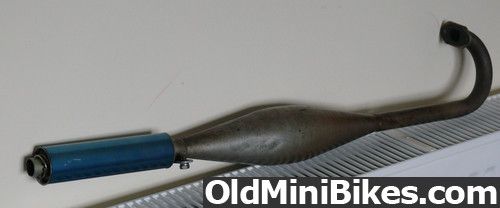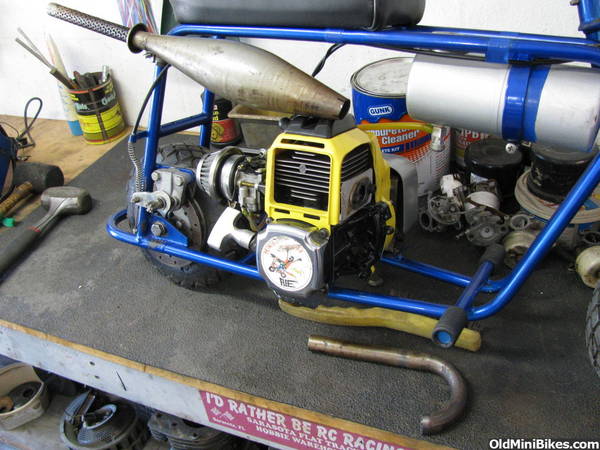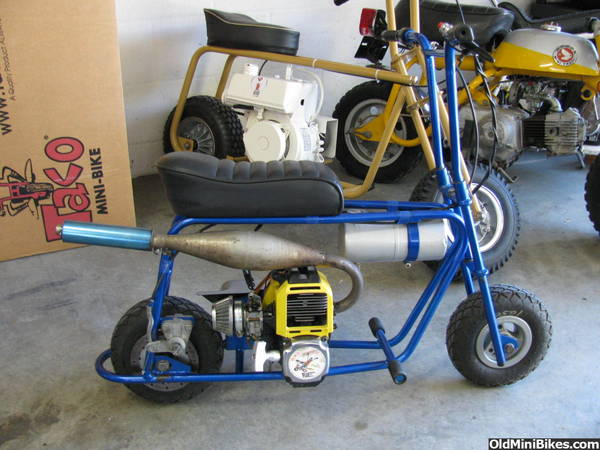been working on the flee, I wanted a pipe for it and found one off some sort of pocket bike that seemed like it would be the easiest to modify for this bike so I bought it, actually had to have it shipped from England which cost more than the pipe did :doah:

So today I started cutting and trying to find the easist and best spot:

right now I have gone as far as welding the flange on to the header, I merly slipped the header into the "Tuned pipe" part of the exhaust (have not cut anything off the header yet, so its say 2 inches inside the chamber.
Before I make all that final I decided I better kinda test it to make sure nothing is gonna hit against the pipe etc.. Good thing I did with my fast ass on the seat the material lops over the side and came too close for comfort so I moved the chamber down and also moved the brake cable.
Out for a ride and its a touch weaker out of the hole than it was but mid hits hard and high end really seems faster than it was. I have not even carved and shaped/match ported the inlet yet and there is a booger weld in there from me.

To my question, I know that a true tuned pipe length shape etc.. is critical for max power, but I can remember from my RC boat racing days that to short a tuned pipe and you'll never get it to come on. That was also small cc nitro engines, turning a LOT more RPMs.
I don't know how critical it is on this little engine, I am just wondering if I should cut the pipe so it s flush going into the chamber or if I should leave a length of pipe into it :shrug:
thoughts before I make it permanent with the welder? Oh yea I want to shorten the stinger down too so that would affect a little too...........
So today I started cutting and trying to find the easist and best spot:
right now I have gone as far as welding the flange on to the header, I merly slipped the header into the "Tuned pipe" part of the exhaust (have not cut anything off the header yet, so its say 2 inches inside the chamber.
Before I make all that final I decided I better kinda test it to make sure nothing is gonna hit against the pipe etc.. Good thing I did with my fast ass on the seat the material lops over the side and came too close for comfort so I moved the chamber down and also moved the brake cable.
Out for a ride and its a touch weaker out of the hole than it was but mid hits hard and high end really seems faster than it was. I have not even carved and shaped/match ported the inlet yet and there is a booger weld in there from me.
To my question, I know that a true tuned pipe length shape etc.. is critical for max power, but I can remember from my RC boat racing days that to short a tuned pipe and you'll never get it to come on. That was also small cc nitro engines, turning a LOT more RPMs.
I don't know how critical it is on this little engine, I am just wondering if I should cut the pipe so it s flush going into the chamber or if I should leave a length of pipe into it :shrug:
thoughts before I make it permanent with the welder? Oh yea I want to shorten the stinger down too so that would affect a little too...........

